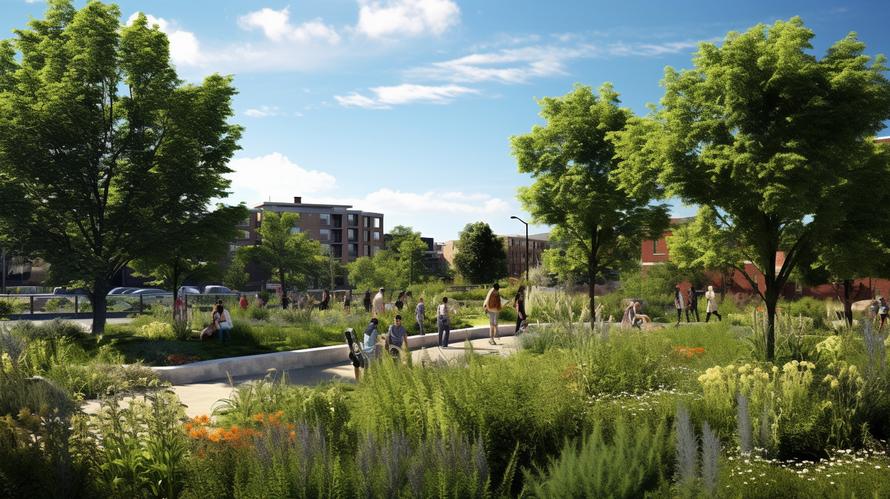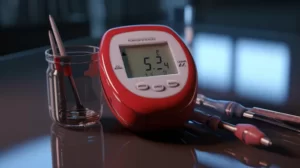Imagine you’re walking through two neighborhoods: one, a lush, green suburb with wide footpaths, parks at every turn, and a farmers market bustling with fresh produce. The other, a cramped urban district with concrete buildings, few trees, and fast-food chains reigning supreme. Now imagine I told you that where you walk could whisper secrets about your health future, specifically your risk of developing cancer. Startling, isn’t it?
This isn’t a script from a dystopian novel. This is real life, echoing the results of a plethora of studies linking the environment in which you live to your chances of facing the big C. A deeper dive into the statistics reveals a striking disparity: those living in areas with lower socioeconomic status often encounter higher rates of cancer.
Why, you might ask? The answers are as layered as the neighborhoods themselves.
To start, consider the built environment—the physical makeup of a community, including buildings, roads, and other infrastructures. Picture the suburb again. Residents here are more likely to have access to clean, well-maintained recreational spaces, making it easier to engage in physical activity—a known factor in reducing cancer risk. Now, the urban district, cramped for space, may struggle to house a single fitness center, rendering exercise an endeavor for the determined or the affluent.
The greenery (or lack thereof) is not mere urban planning aesthetics. Trees and plants aren’t just pretty; they are the lungs of our cities, filtering out pollutants that have been linked to cancers, such as lung and breast cancer. A neighborhood lacking in this green armor is more vulnerable to the silent but deadly air that fuels these diseases.
Venturing indoors, we unearth more risks lurking in the homes of lower economic areas. These households may face exposure to carcinogens like radon and asbestos, especially in older buildings with inadequate maintenance. And let’s not forget about tobacco smoke—still a leading cause of lung cancer. In economically stressed communities, tobacco companies often target these areas aggressively, leading to higher smoking rates and secondhand smoke exposure.
Now, zoom in on the dinner plates of these contrasting communities. Dietary patterns are deeply rooted in neighborhood soil, both metaphorically and literally. In affluent areas, fresh produce is more abundant and oftentimes more affordable, while lower-income neighborhoods may be riddled with food deserts where residents’ food options are confined to what’s available: highly processed foods rich in preservatives and low in nutritional value.
The ties that bind economic status to cancer also lace through the very threads of the healthcare system. Financial constraints can mean limited access to health education, regular screenings, and early cancer detection services, which are critical in managing cancer outcomes. Individuals in lower economic strata may also face barriers to comprehensive healthcare coverage, leaving them in a precarious position when they most need support.
But knowledge equips us with power—the power to make individual and collective change. Understanding the nexus between economic standing and cancer risk is the first step towards rewriting the narratives of neighborhoods.
Here’s what we can do:
Firstly, we can advocate for policies that introduce equitable access to healthcare, pushing for initiatives that bring screening and preventative programs to underserved areas. Awareness campaigns, mobile clinics, and subsidized healthcare services can serve as bridges over the gaps in healthcare disparities.
Secondly, creating community gardens and subsidizing local farmers markets can transform food deserts into oases of nutrition. Not only does this combat dietary-related cancer risks, but it also fosters a sense of community and engagement, strengthening the social support networks that are vitally important for overall health.
Thirdly, reaching out to city planners and government bodies to prioritize the development of green spaces and ensure that building codes in all economic areas protect residents from environmental carcinogens can help mitigate risk factors.
And individually, we can make a difference by volunteering, educating, and supporting local initiatives. Every food bank contribution, every hour spent planting trees, and every helping hand in organizing community health fairs adds up.
As we navigate our daily lives, we must never forget that the fight against cancer begins at home, quite literally. It’s time to make sure every neighborhood—regardless of its economic makeup—is a place where health can not only survive but thrive.
Understanding how our zip codes influence our cancer codes is not about painting a picture of doom for certain areas, but about igniting a movement of transformation. By addressing these socioeconomic determinants of health collaboratively, we can shift the odds and build a future where the neighborhood one calls home doesn’t dictate the health one is afforded. It’s a tall order, indeed, but with collective vision and action, it’s within our grasp. Let’s walk these streets with the resolve to make every step, every choice, and every policy count toward a cancer-free horizon.



